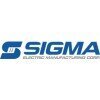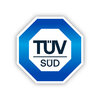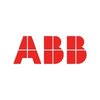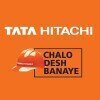


i
Forbes Marshall
Filter interviews by
Forbes Marshall Design Engineer Interview Questions and Answers
Forbes Marshall Design Engineer Interview Experiences
1 interview found
Steam engineering knowledge on steam products
(1 Question)
- Q1. What is steam engineering
- Ans.
Steam engineering involves the design, operation, and maintenance of systems that utilize steam for various industrial applications.
Involves designing steam systems for power generation, heating, and industrial processes
Requires knowledge of thermodynamics, fluid mechanics, and heat transfer
Includes maintenance of boilers, steam turbines, and piping systems
Examples: steam power plants, steam heating systems in building
Top trending discussions






Interview questions from similar companies

I applied via Referral and was interviewed in Mar 2018. There were 5 interview rounds.
Interview Questionnaire
1 Question
- Q1. Technical interview based on past company experience
Interview Preparation Tips
Experience: Casting background
Round: Test
Experience: Model test on creo 2
General Tips: Interview was excellent as they need mainly candidate having good product exposure in detail which ever field you are working make sure you have thorough knowledge.Gd&t must be good and cad knowledge is must...
Skills: Creo 2, Communication, Body Language, Leadership, Decision Making Skills
Duration: <1 week

Senior Engineer Interview Questions & Answers
Sigma Electric Manufacturing Corporationposted on 10 May 2018
I applied via Company Website and was interviewed in Jan 2018. There were 2 interview rounds.
Interview Preparation Tips
Experience: technical round
no. of questions 30
Round: Test
Experience: Questions related to NPD
no. of questions 10
Round: Test
Experience: VP Round
all questions reated to job 10
Round: Test
Experience: HR round ..
General Tips: Know the JD before interview
Skills: Communication, Body Language, Decision Making Skills
Duration: 1-4 weeks

I applied via Naukri.com and was interviewed before May 2020. There was 1 interview round.
Interview Questionnaire
1 Question
- Q1. Write the equation for dynamics and wave spectra equations. I do not remember questions as it is 3 years back.
Interview Preparation Tips

Interview Questionnaire
1 Question
- Q1. How to sense flow transmitter to transmit signal to controller in selected range?
- Ans.
Flow transmitter senses flow and transmits signal to controller in selected range.
Use a flow transmitter that is capable of sensing flow and transmitting a signal.
Connect the flow transmitter to the controller using appropriate wiring and communication protocols.
Configure the flow transmitter to operate within the desired range.
Ensure proper calibration of the flow transmitter to accurately measure and transmit flow da...

I applied via Referral and was interviewed before Apr 2021. There was 1 interview round.
(1 Question)
- Q1. Maintenance phylosophy
- Ans. Depends on equipment running hour, criticality, availability and standby.
Interview Preparation Tips
- Boe
- Energy manager

Senior Engineer Interview Questions & Answers
Isgec Heavy Engineeringposted on 20 Nov 2021
I applied via Naukri.com and was interviewed in May 2021. There was 1 interview round.
Interview Questionnaire
1 Question
- Q1. They just asked basics que. related to job profile.. seeking confidence..
Interview Preparation Tips

I applied via Referral and was interviewed in Nov 2023. There were 3 interview rounds.

(1 Question)
- Q1. What is your highest qualification
- Ans.
My highest qualification is a Master's degree in Electrical Engineering.
Master's degree in Electrical Engineering
Specialized in power systems
Thesis focused on renewable energy integration
Completed advanced courses in control systems
Published research papers in IEEE conferences
(1 Question)
- Q1. What is your role and responsibilities in the project quality?
- Ans.
As a Senior Engineer, my role in project quality is to ensure that all deliverables meet the required standards and specifications.
Developing and implementing quality assurance processes and procedures
Conducting regular audits and inspections to identify any quality issues
Collaborating with cross-functional teams to address and resolve quality concerns
Creating and maintaining quality documentation, including test plans...

I appeared for an interview before Mar 2024, where I was asked the following questions.
- Q1. How many your experience
- Ans.
I have over 8 years of experience in software engineering, specializing in full-stack development and team leadership.
Led a team of 5 engineers in developing a scalable e-commerce platform, resulting in a 30% increase in sales.
Implemented CI/CD pipelines that reduced deployment time by 50%, enhancing team productivity.
Worked on a healthcare application that improved patient data management, ensuring compliance with HIP
- Q2. What is your responsibility at site kindly tell us
- Ans.
As a Senior Engineer on-site, I oversee project execution, ensure safety compliance, and mentor junior engineers.
Project Management: Oversee daily operations and ensure project milestones are met, e.g., coordinating with contractors.
Safety Compliance: Implement safety protocols and conduct regular safety audits to minimize risks, e.g., ensuring PPE usage.
Technical Guidance: Provide technical support and solutions to en...
- Q3. What is the process of alignment
- Ans.
Alignment is the process of adjusting components to achieve optimal performance and coherence in systems or teams.
In engineering, alignment ensures that mechanical parts fit together correctly, e.g., aligning gears in a machine.
In project management, team alignment involves ensuring all members understand and work towards the same goals.
In software development, code alignment refers to maintaining consistent coding sta...
Interview Preparation Tips

I applied via Walk-in and was interviewed in Mar 2024. There was 1 interview round.
(7 Questions)
- Q1. HOW TO CALCULATE CT CURRENT
- Ans.
CT current can be calculated by dividing the primary current by the turns ratio of the current transformer.
CT current = Primary current / Turns ratio
Primary current is the current flowing through the primary conductor
Turns ratio is the ratio of the number of turns in the primary winding to the number of turns in the secondary winding
- Q2. WHAT IS LOCKOUT REALY
- Ans.
Lockout is a safety procedure used to ensure that machinery or equipment is properly shut off and cannot be restarted until maintenance or servicing is completed.
Lockout involves isolating energy sources to prevent accidental startup.
Lockout devices like padlocks and tags are used to physically lock equipment.
Lockout procedures must be followed to prevent accidents and injuries.
Examples of lockout include locking out e...
- Q3. WHAT IS IP65 FOR PANEL
- Ans.
IP65 for panel refers to the level of protection against dust and water ingress.
IP65 rating means the panel is dust tight and protected against water jets from any direction.
The first digit '6' indicates the level of protection against solid objects like dust.
The second digit '5' indicates the level of protection against water ingress.
Commonly used in outdoor or industrial applications where the panel may be exposed to...
- Q4. What is TCS AND MASTER TRIP REALY
- Ans.
TCS and Master Trip Relay are protective devices used in electrical systems to prevent damage during faults.
TCS stands for Time Current Characteristic Relay, which operates based on the relationship between time and current to trip the circuit breaker during faults.
Master Trip Relay is a relay that receives signals from various protective relays and initiates a trip signal to disconnect the circuit in case of a fault.
B...
- Q5. WHAT IS LSC 2A AND LSC 2B
- Ans.
LSC 2A and LSC 2B are standards for lighting in commercial and industrial buildings.
LSC 2A and LSC 2B are part of the Lighting Power Density (LPD) requirements in building codes.
LSC 2A is for commercial buildings while LSC 2B is for industrial buildings.
They specify the maximum allowable power consumption for lighting per unit area in a building.
For example, LSC 2A may require a maximum LPD of 0.9 watts per square foot
- Q6. What REF PROTECTION and HIgh impedance and low impedance
- Ans.
REF protection is used to prevent damage to equipment from electrical faults. High impedance protection is used for sensitive equipment, while low impedance protection is used for power systems.
REF protection is used to detect ground faults and prevent damage to equipment.
High impedance protection is used for sensitive equipment that requires high accuracy and low fault currents.
Low impedance protection is used for pow...
- Q7. ANSI CODE FOR VERIOUS PROTECTION
- Ans.
ANSI codes are used to identify various types of protection devices in electrical systems.
ANSI code 50/51 is for instantaneous overcurrent protection
ANSI code 67 is for directional power protection
ANSI code 87 is for differential protection
ANSI code 59 is for overvoltage protection
Skills evaluated in this interview
Forbes Marshall Interview FAQs
Tell us how to improve this page.
Forbes Marshall Interviews By Designations
- Forbes Marshall Graduate Engineer Trainee (Get) Interview Questions
- Forbes Marshall Intern Interview Questions
- Forbes Marshall Manufacturing Engineer Interview Questions
- Forbes Marshall Contract Engineer Interview Questions
- Forbes Marshall Energy Auditor Interview Questions
- Forbes Marshall Senior Engineer Interview Questions
- Forbes Marshall Product Manager Interview Questions
- Forbes Marshall Data Analyst Interview Questions
- Show more
Interview Questions for Popular Designations
- Mechanical Engg. Design Interview Questions
- Senior Design Engineer Interview Questions
- Electrical Design Engineer Interview Questions
- Structural Design Engineer Interview Questions
- Piping Designer Interview Questions
- Auto CAD Designer Interview Questions
- Junior Design Engineer Interview Questions
- Hardware Design Engineer Interview Questions
- Show more
Forbes Marshall Design Engineer Interview Process
based on 2 interviews
Interview experience
Design Engineer Interview Questions from Similar Companies
Fast track your campus placements
Forbes Marshall Design Engineer Reviews and Ratings
based on 9 reviews
Rating in categories
|
Quality Executive
78
salaries
| ₹4.8 L/yr - ₹5 L/yr |
|
Project Engineer
66
salaries
| ₹2 L/yr - ₹8.5 L/yr |
|
Executive Engineer
52
salaries
| ₹5.9 L/yr - ₹12.3 L/yr |
|
Product Manager
49
salaries
| ₹10.6 L/yr - ₹30 L/yr |
|
Team Lead
47
salaries
| ₹10.6 L/yr - ₹24 L/yr |

Thermax Limited

Cummins

ABB

Isgec Heavy Engineering
- Home >
- Interviews >
- Forbes Marshall Interview Questions >
- Forbes Marshall Design Engineer Interview Questions











